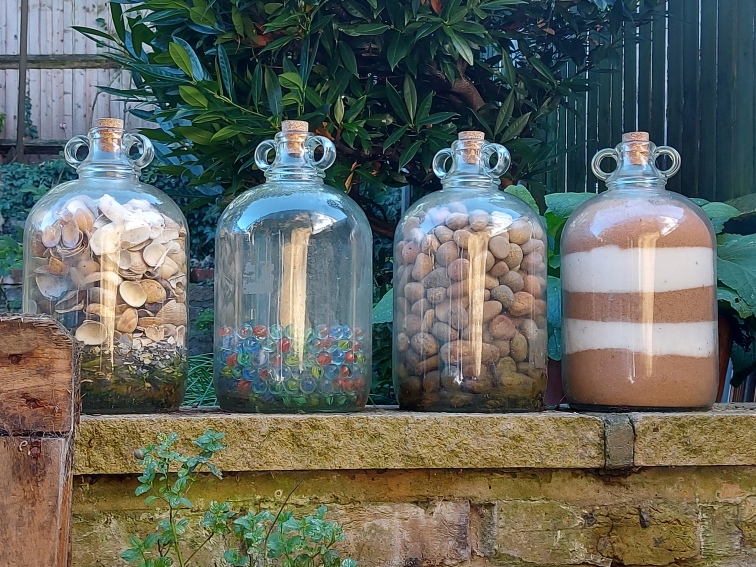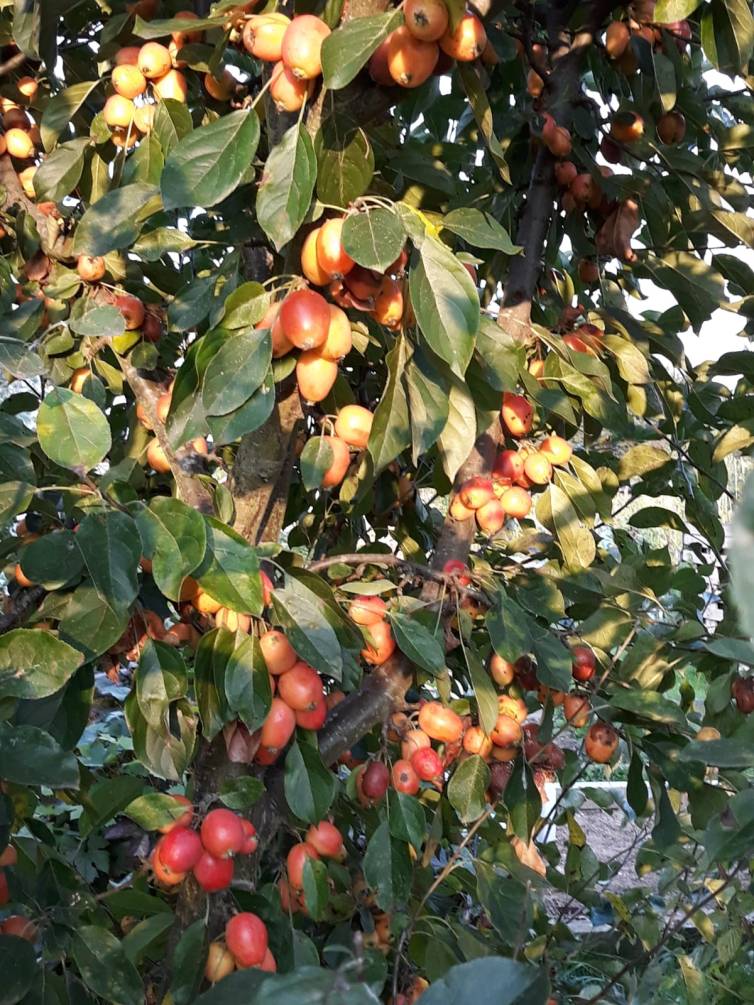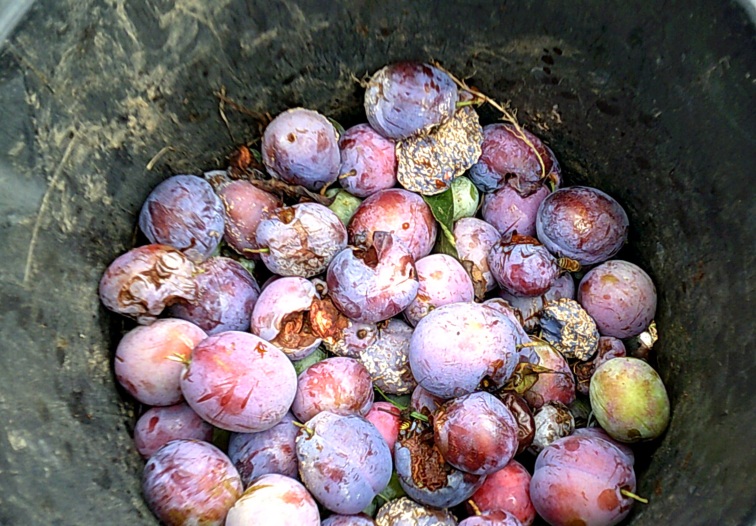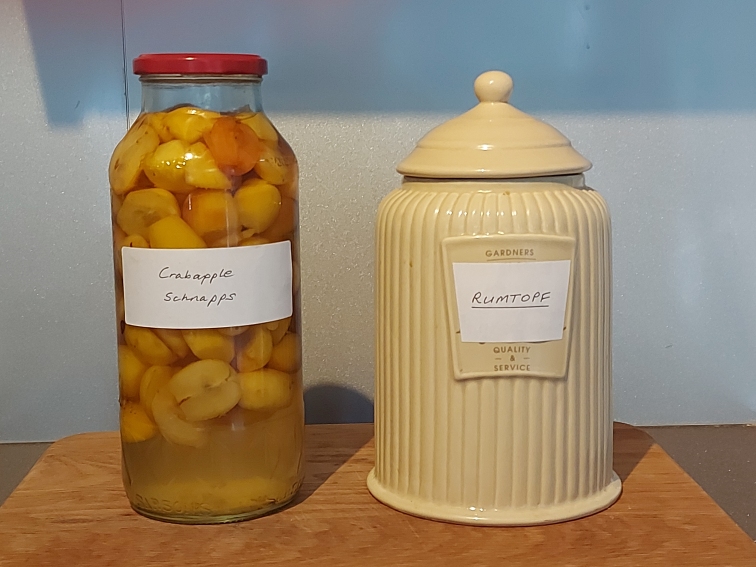Grow your own booze

Years ago, the only booze we grew was home-made wine, using just about any fruit or vegetable growing, or going, on our allotment. I even made rose petal wine as a kid. You need a lot of petals. Once I’d removed every petal from the bushes in our garden (no one seemed to mind) I started on the neighbours’. Of course, I asked permission (most of the time). It was perhaps the only wine I ever made that didn’t give a hangover the size of Hanover and out of all proportion to the enjoyment of the sip. Even my mum liked it.
There are plenty of recipes online and in books. And you’ll find nearly all the gear you need in your local Wilko.
We no longer make wine as such – we now have other ways of growing our own booze. Here’s a brief A–Z (or A–S to be precise) of them.
Apples
We’ve made cider a few times, but usually find that apple juice fresh out of the screw press tastes too divine to do anything else with. So, the only contribution of the apple to our festivities these days is as an ingredient in rumtopf (see Rumtopf below).
Crab apples

A Swedish recipe in which 20 or so crab apples are washed, halved then steeped in a jar of vodka for a few months in a dark place, turning and shaking from time to time. You can make it with or without sugar – we usually do one of each. After two weeks (with sugar) or two months (without) you strain off and bottle the infused vodka. The remaining vodka-steeped fruit makes a lovely jelly-jam. This year we’re trying it with gin.
Cucumbers
A fellow plot holder introduced us to the joys of cucumber in gin. The cucumbers we grow are sweeter and crunchier than shop-bought ones and have a slight lemony taste. The perfect snack once your glass is empty!
Damsons
Damson gin is lovely. Don’t bother removing the stone-pips; too fiddly. Just pick, rinse, prick and pickle in gin – not easy to say after a damson gin or two. Add half as much sugar as you have fruit, cover and leave for three months. After the damson gin has been decanted off, the gin-soaked fruit makes a delicious damson gin jam, which isn’t that easy to say either. It also makes a super sauce.
Elder
Elderflowers scent cordials. Elderberries are chock-full of vitamins and make great syrup. Both are popular with wine-makers. I came across this recipe for Pontack Sauce in Richard Mabey’s Food for Free. It’s not really booze but it is interesting. Pontack Sauce was once a must in the luggage of every retired military gentleman when travelling.
Take a deep breath and: pour one pint of boiling claret over a pint of elderberries in a stone jar. Cover and stand overnight in an oven on a very low heat. The next day, pour off the liquid into a saucepan with a teaspoon of salt, a blade of mace, 40 peppercorns, 12 cloves, a finely chopped onion, some ginger, and a partridge in a pear tree. Boil for ten minutes, bottle and – here’s the best bit – leave for seven years. Seven years? A recipe too far, methinks.
Greengages
These go well in rumptopf, along with apples and any other fruit that takes your fancy. What is rumtopf, apart from being a lovely word? (see Rumtopf below)
Hops
One of our plot neighbours grows hops, supported by pieces of string hung from a large wooden frame, in a runner bean style. The hops are used to make craft beer. Haven’t tried it, but I’m told craft beer slops make good fertiliser.
Marrows
Marrow rum is an interesting concept that we’ve yet to try as it seems a bit laborious. In short it involves cutting the top off a marrow, scooping out the seeds and filling with demerara sugar and a yeast preparation. You fix the marrow top back on and when the marrow starts to drip, drain into a demijohn and add raisins. Fit an airlock and let it ferment, then bottle and leave for a year or so. Hmm, might give it a go.
You can find the complete recipe here: Marrow Rum Recipe – How to Make Marrow Rum (lowcostliving.co.uk)

Plums
These don’t tend to finish up in the booze production channel. But each autumn we do notice wasps getting plastered on the rotting windfalls.
Potatoes
It’s illegal to make potato vodka at home but you can find dozens of ‘hypothetical walk-through’ recipes online.
Rosehips
The only home-made wine we stuck with after abandoning all others. Sweet and sherry-like, and not too headachy. These days we either do rosehip syrup (more vitamins than oranges) or rosehip sauce (great with pork).

Rumtopf
Friends in Southport introduced us to this delight. Use just about any fruit you fancy; dried, frozen or fresh. We go with greengages, apples and sultanas. Chop larger fruit into bite-sized pieces, and mix with the remaining fruit. Add half the amount of sugar and leave for an hour. Put in a pot, add rum and leave in a dark cupboard for two or three months. Add more rum if needed.
Sloes
Sloe gin. As for Damson gin above. After the sloe gin has been decanted off, you can use the gin-soaked fruit to make Nelson’s Blood. Pour ruby port on the fruit to fill the jar, seal and leave for three months.

Sour cherries
If any are spared by wild animals, or by us (great with ice-cream and shaved dark chocolate), cherry whisky is the way to go. Stone a pound of sour cherries (I guess ordinary ones would do just as well), chop up the flesh and crush the stones. Add to a big jar, along with half a nutmeg, a blade of mace, a few peppercorns and a tablespoon of sugar. Fill to the top with whisky and put a lid on it. Two weeks later you’d be saying ‘What a winter warmer!’ if it weren’t such a cliché.

